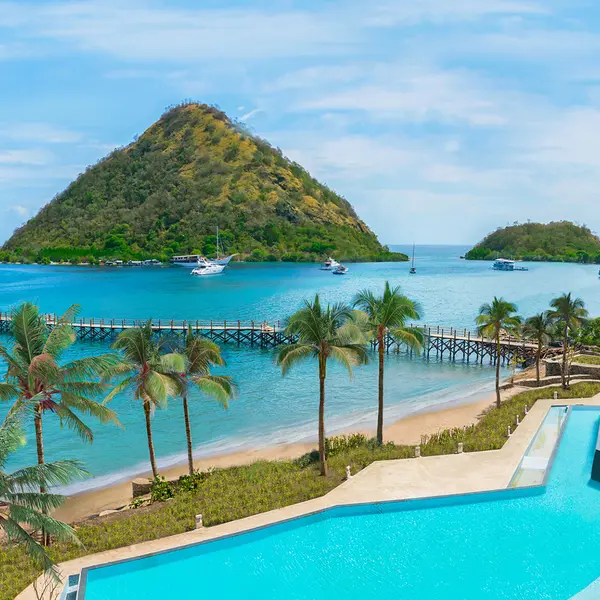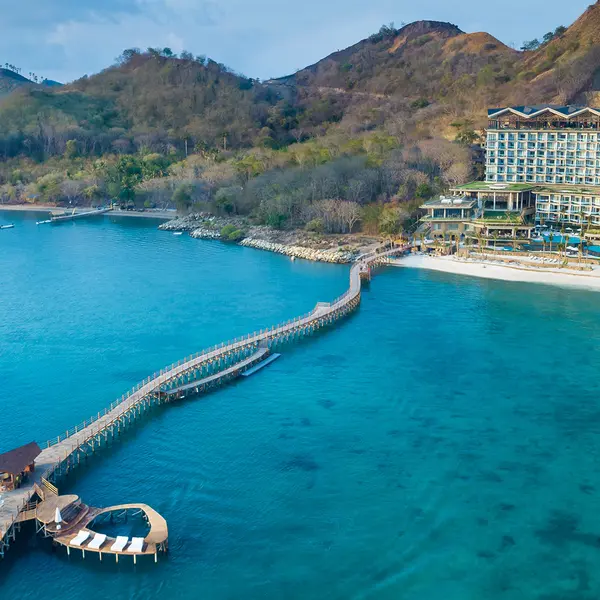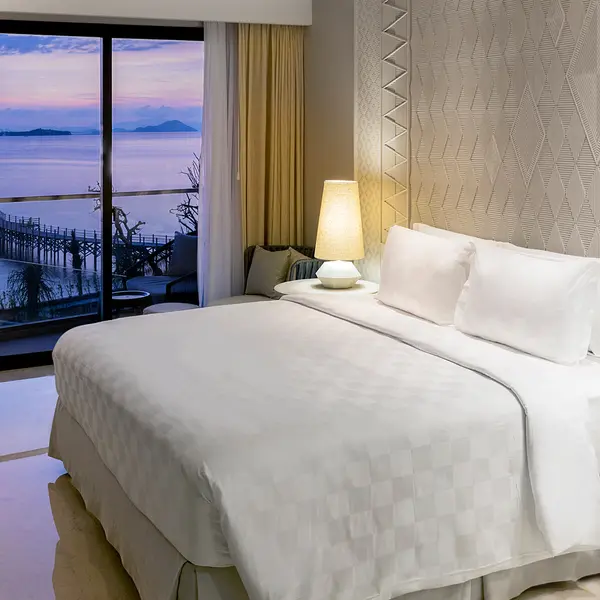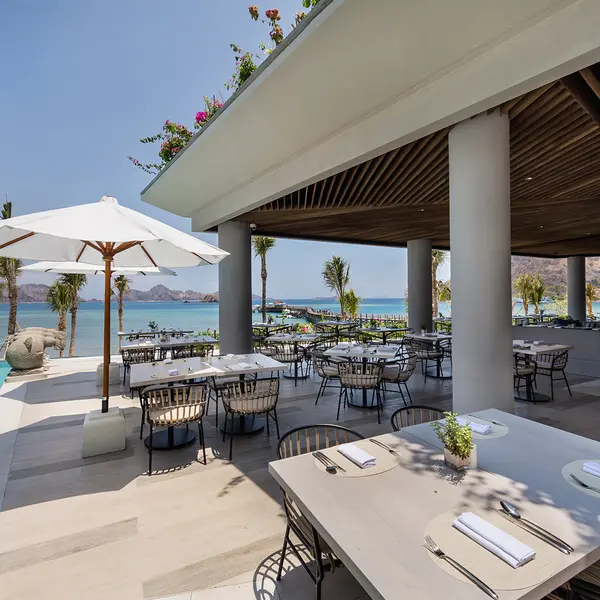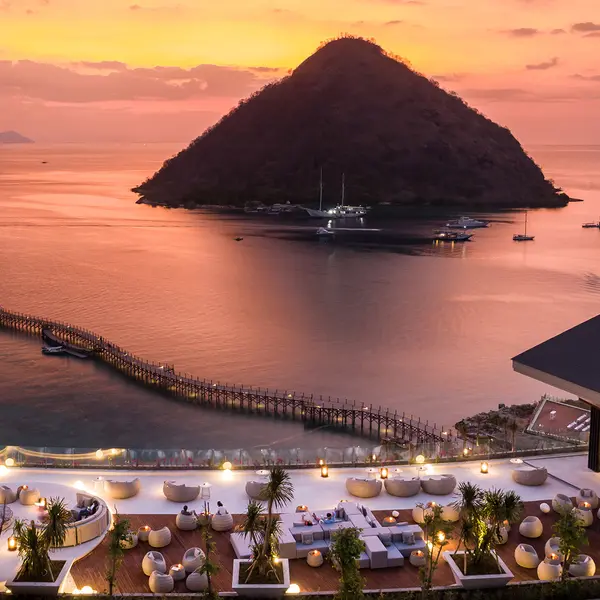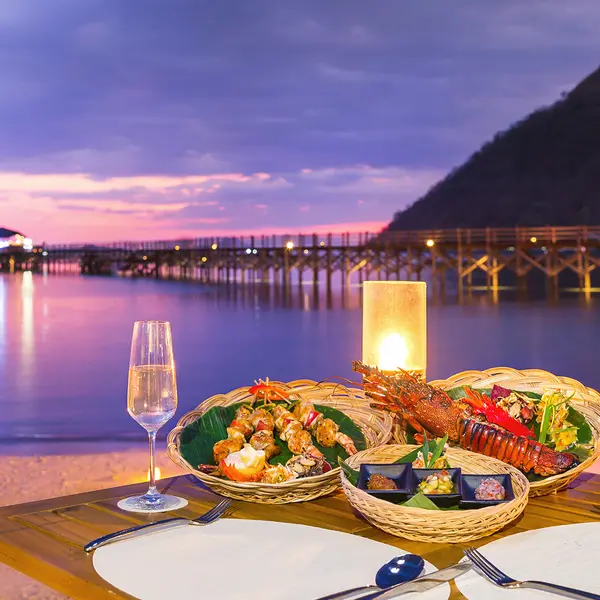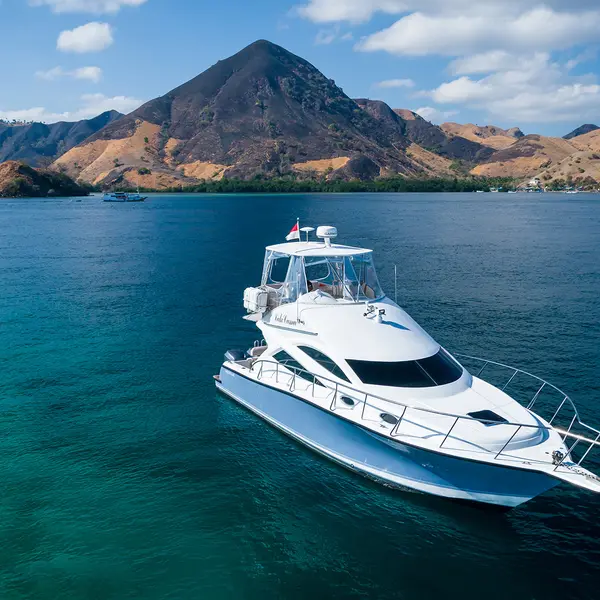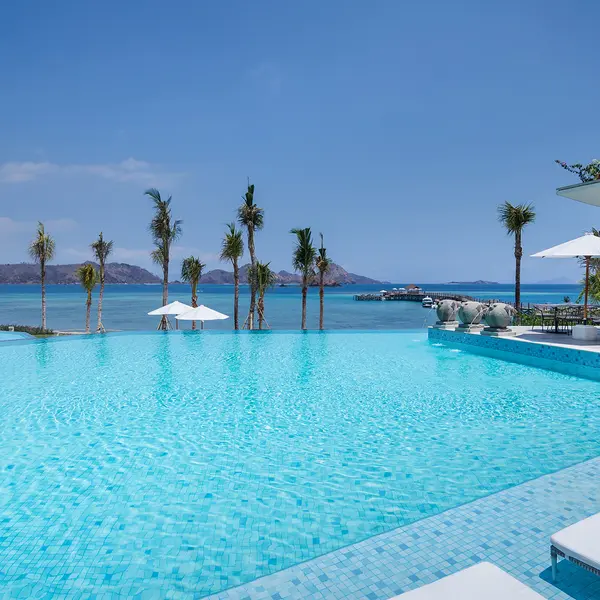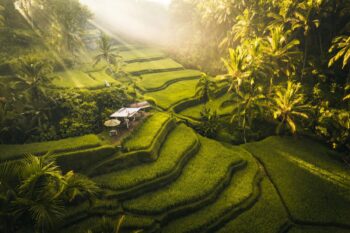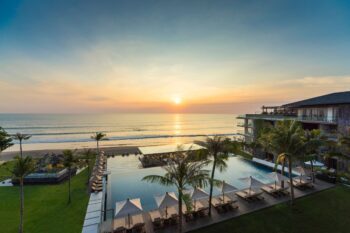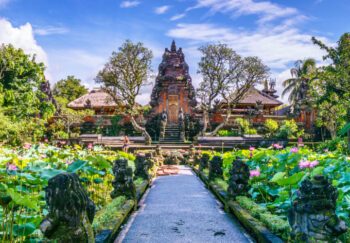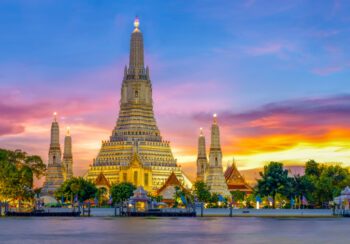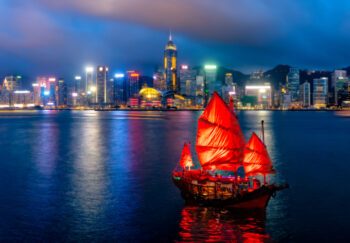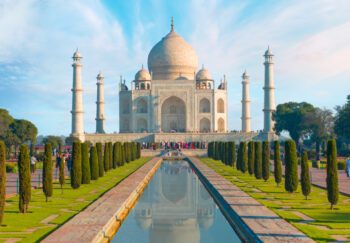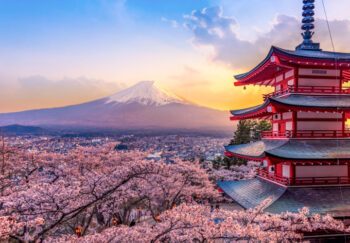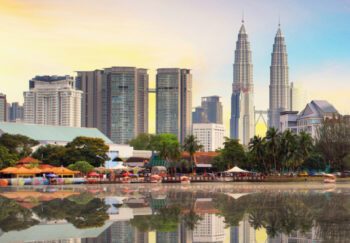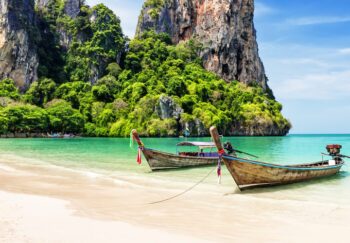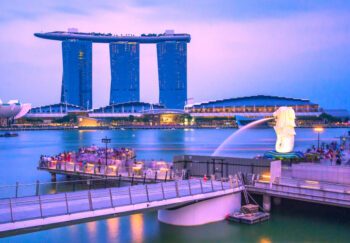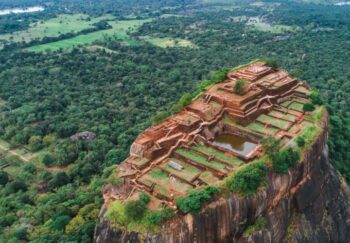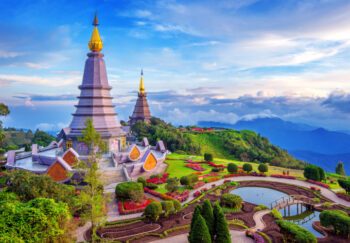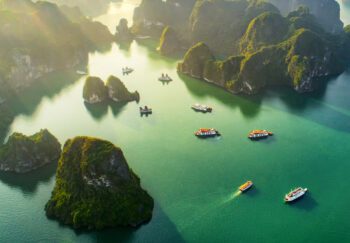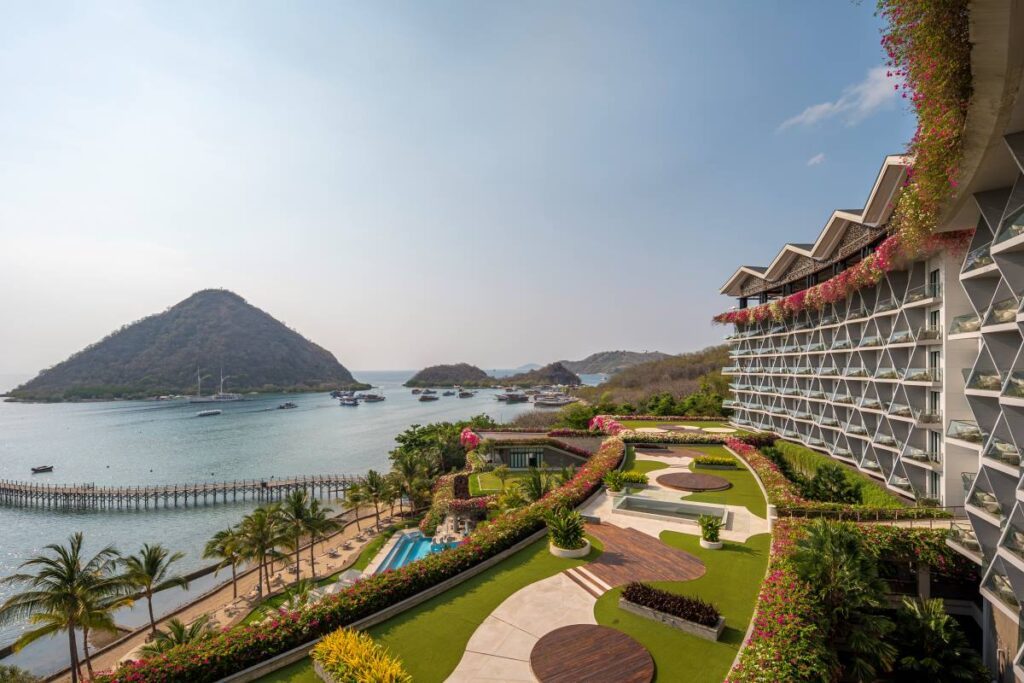
A ranger’s hand shoots into the air, forcing my abrupt stop along the beach of Komodo National Park, beneath the blistering Indonesian sun. I look under the old wooden pier and, lurking in the shadows, I see my first Komodo dragon.
This robust reptile is covered in earth-toned scales and can weigh between 65 to 90 kilograms. The head is large and flat with a rounded snout hiding serrated teeth; they prowl around on muscular legs ending in fearfully sharp claws and have a venom that prevents blood from clotting. A bite from this creature, sleeping just metres from where we stand, can be fatal.
The group collectively holds its breath, and I can’t help thinking how close we came to unknowingly interrupting the slumber of this ancient beast. Protected only by two park rangers holding cricket-bat-sized sticks, we travel in a pack, one ranger at the front and one taking up the rear “to ensure no dragons sneak up on us from behind”. The rangers appear to enjoy the apprehension present in the group as we push further into the home of the dragon.
These giant lizards can only be found roaming free in this Indonesian archipelago where two- to three-metre long reptiles sun themselves on the dry savannah amongst clusters of thorny vegetation. Declared a UNESCO World Heritage-listed site, the volcanic island has changed little since its discovery – dragons still outnumber people. The animals are left to their own devices, as they were thousands of years ago,
making the thrill of witnessing them without a physical barrier so memorable.
We push deeper into the hot shrubbery and in the trees high above us, I spot a baby dragon devouring a snake for its mid-morning snack.
Here, there be dragons
My base for heading into the dragon’s den is Flores Island, the gateway to Komodo National Park. Flores Island is a one-hour flight from Bali and is separated from Komodo National Park and the dragons themselves by just a short stretch of the South Pacific Ocean. Flores, part of the Sunda Island chain, is 5,500 square miles of wilderness dotted with sleepy portside towns like the step-off point at Labuan Bajo.
Just outside the town is the first luxury resort on the island, AYANA Komodo Waecicu Beach, who organised trips for me where I swam in untouched coral reefs, walked among near-extinct dragons, hiked
volcanic islands, and snorkelled from rose-coloured beaches.
The best way to see the bounty of the Sunda Islands is a full-day boat trip from the AYANA resort to three of the islands that create part of Komodo National Park. Padar Island, the first stop, is formed around an extinct volcano where we climb over 800 rocky steps for a panoramic view revealing three deep bays far below the mountain peak. Each of the bays has a different coloured sand: one pearlescent, the second a deep onyx, and the final one a flirty blushed pink.
A highlight of my island-hopping adventure was the lesser-known wonder Pantai Merah, or Pink Beach. AYANA’s in-house marine biologist, Lee Miles explains the vibrant colour of the beach on the very tip of Komodo Island “is caused by the bright red colouring of tubipora musica coral washing
onto the shoreline”.
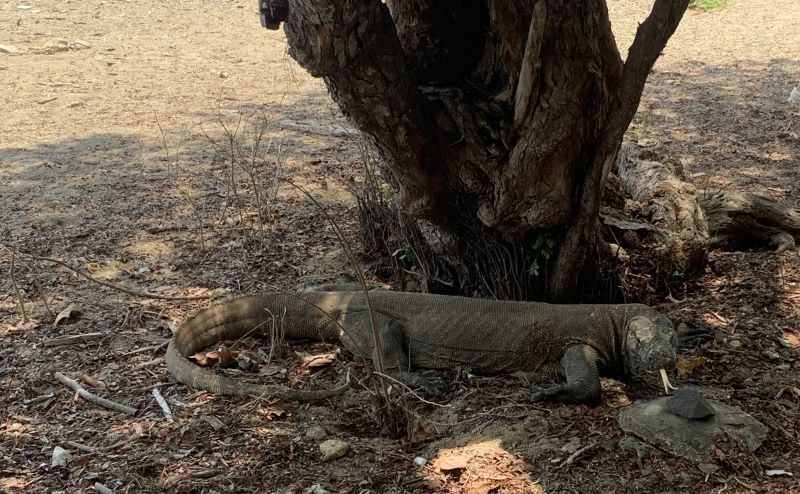
Also known as “organ pipe” coral, Miles confirms this is a natural phenomenon unique to regions within the Coral Triangle, a portion of the world’s coral reefs that reaches Indonesia, Malaysia, Papua New Guinea, the Philippines, the Solomon Islands and Timor-Leste. Beyond the pink sand, I snorkel between astonishing species of coral rising nearly to the water’s surface, forming a channel for the marine life and myself to swim in.
For guests who want to give back, Miles invites them to assist with coral planting, which is “an integral component to restoring the house reef, by saving broken or crushed pieces of coral that then create a new reef strong enough to survive and grow”. To replant the coral, Miles has me tie the broken
pieces to natural-fibre ropes which are then strung up in the coral nursery. Visiting Komodo National Park is like swimming with uncaged with sharks, it’s dangerous, thrilling and completely worth the effort. For all the trepidation in crossing paths with the mighty creatures I had heard so much about, I feel extremely
lucky to have knocked on the Komodo dragon’s door.
I went to observe the Komodo dragon in its natural habitat, but in doing so I discovered the beauty of Flores Island, Padar Island and Pink Beach – three destinations that snuck up on me more than the dragons did.

This article was originally featured in the third issue of Dream by Luxury Escapes magazine. Get your copy here.
